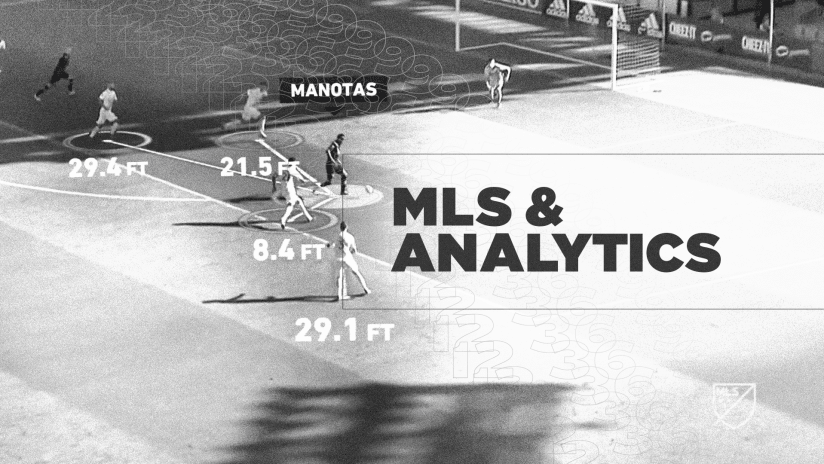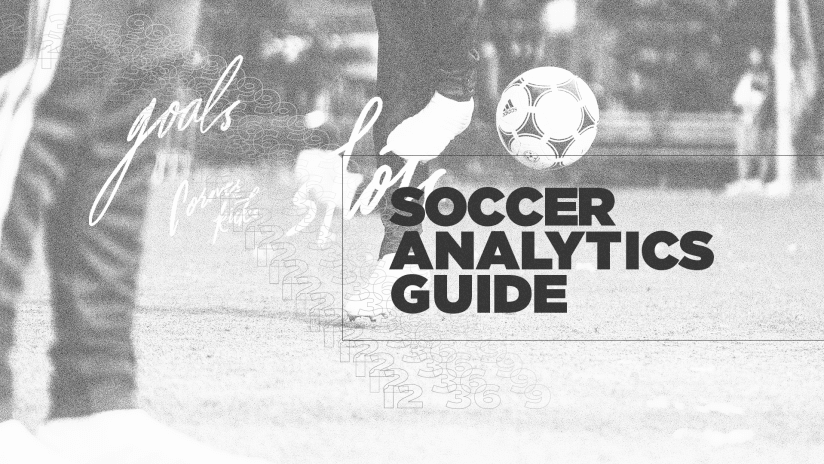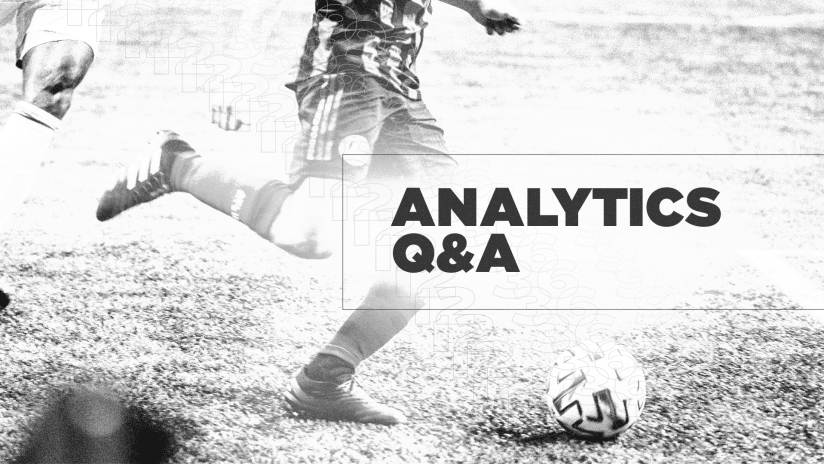The billions of dollars that MLS clubs and their owners continue to invest in star players, academies, new stadiums and training facilities typically claim the headlines. But there's another level of investment happening behind the scenes that also promises to pack a long-term impact on the game in North America.
MLS owners are dedicating significant resources to build out a data and performance tracking infrastructure that if successful will allow its clubs to take another step in their rapid evolution.
The latest development came just days before the launch of the 2020 MLS season when the league announced a partnership with Second Spectrum for new advanced tracking data. It was the latest mark of the league's intent on being a leader in data, analytics and new technologies. This deal is on top of the league's long-term existing partner in Stats Perform (formerly Opta) going back to 2010, which provides event-data for MLS matches. They also do all MLS academy matches and are the official data for sports betting.
The impact of the Second Spectrum deal will be felt across all technical aspects of the game and fans will also notice it on the field and in the media as this new technology enhances match broadcasts and gives fans a whole new way to experience a game.
The tracking data, including a new set of physical data, will provide club technical staffs with improved contextual analysis and a better understanding of individual performances. These on-field benefits, of course, were at the forefront of the new initiative.
“We’ll have substantive tracking data for all of our clubs at the end of the season, which I think is going to put us in the position to do a lot of really, really sophisticated analysis in-game and scouting," said Columbus Morfaw, director of player analytics & strategy at MLS. "We believe it’s going to put us at the forefront of this space.”
The new data is possible thanks to the installation of special cameras across all MLS stadiums during the offseason. Those cameras track exactly where the players and the ball are 25 times per second, pumping out a massive data set of X, Y and Z coordinates throughout the game — all told, it's a couple of million data points.
Armed with this information, coaches, scouts and analysts can see their observations and analysis quantified and expanded. How many times did a player complete a line-breaking pass? How many opportunities did they have to do it? How often is a center back caught out of position or how many times have they been in the right spot all along? How many off-ball runs did each player make? How many sprints?
“You have this world of data that’s really semantically relevant to soccer that didn’t exist before, or that only existed from a coach being able to watch two games and subjectively pull out his or her thesis," said Mike D'Auria, VP of business development at Second Spectrum. "When you put this in the hands of clubs, and we’re at the early days here, but we think it can be very transformative.”
Take, for example, the exercise of determining the league's best pressing forwards. In the past, you could only measure that quality with event data (i.e. a game action like a "tackle" or "interception" in this case). But that didn't always tell the full story.
“A striker such as David Villa was really good at pressing the ball, without ever touching the ball," Morfaw said. "He was taking up specific positions, forcing the pass and achieving the goal his team needed of him. That’s the type of information we’ll be able to capture that was never the case before we had it.”
The cameras also track the ball 25 times per second, thus giving next-level data regarding passing, shot attempts and myriad other analytical categories. How many teammates were in the vicinity? What was the velocity on the pass or shot? What was the likelihood of completion/goal at the time of the action?
And as the computers watch more MLS, the smarter they'll become about what they're watching.
“What’s really cool about Spectrum is that many of their staffers were professors at USC," said Chris Schlosser, senior vice president of media at MLS. "They were specialists not in analytics, but computer vision and machine learning. Their whole thesis was that computers could start to generate sports data automatically without a human having to score the game.”
And as the league and Second Spectrum engage in regular dialogue with coaches to determine what more they want to learn, the information will only continue to expand.
For example, if a coach wants to specifically see what his or her backline does in the 10 seconds after possession has been lost, that data can be provided. And the videos will be clipped together so they can watch all the examples of it. Just like that, a new subset of data is created.
“After that, Second Spectrum will go back and create a customized defensive transition set of metrics that answers that question," Morfaw explained. "Once that coach does that, it’s in the tool for everybody to use. Over time, all those examples add up.”
Second Spectrum originally signed a deal with the NBA in 2016. Their tracking data has helped further basketball's evolution, giving coaching and front office staffs a ton more valuable information to inform their decisions.
“We actually think in soccer it’s more valuable than even in basketball," D'Auria added. "Just because the nature of the game, data that’s important to coaches, traditionally hasn’t been measured.”
What's next in soccer analytics?
As the technology grows smarter, the data set will only expand and there are some new advancements that could arrive as soon as the end of 2020.
On the field, the systems will understand shot values for specific players. Maybe a shot from 25-yards out is not a smart decision for the average player, but for the LA Galaxy's Cristian Pavon, it's a productive shot. Then apply that same line of thinking with pass attempts. Haris Medunjanin hitting a dangerous line-splitting pass forward might turn out to be a safer option than for most defensive midfielders.
“One way this gets better is as we partner with and have more time with clubs, that’s where the most forward-thinking data ideas will come from," D'Auria said. "That’s a huge part of our business, sitting next to the analysts and coaches to figure out their hardest and most important questions. How can we help you answer them?”
Another way advancement will be felt is with in-game analysis.
“We have some data available to us live and one of the projects we’re working on right now is delivering that a bit faster so we can use it in a more automated fashion in-game," Toronto FC director of analytics Devin Pleuler said. "It’s definitely something we’re still moving towards. The MLS rules are a lot more progressive than some of the other leagues in terms of data and video on the bench. We’re exploring ways to get that information down to the coaches and training staff as soon as possible.”
The data is close to realtime, with a lag of just a few minutes. The goal is for this in-game tracking data to help inform decisions for the coaching staff during matches.
These same concepts will also help inform transfer market moves.
Currently, Second Spectrum have a deal with the English Premier League, meaning MLS clubs could have substantial data on transfer targets both inside and outside that league. In recent years the two-way movement between England's top division and MLS has grown, including deals taking Miguel Almiron
from Atlanta United to Newcastle, Josh Sims from Southampton to the New York Red Bulls and Victor Wanyama from Tottenham to Montreal Impact.
“There’s a world in which, say, five years from now where there’s multiple leagues we scout have it," Morfaw said. "Then it’s the ability to use everything we’re talking about on a global scale.”
Is soccer analytics the future of watching a game?
The partnership with Second Spectrum will also have significant benefits for fans watching at home. On the broadcast side, features like enhanced highlights (see example below) and other graphics will become more regular during broadcasts, even in real-time.
“In time, we think they’ll be able to do that in real-time so the whole game will have special graphics on top," Schlosser said. "That’s something we’ll work to roll out later this year. Who knows what comes beyond that? There are other applications for scouting, coaching and betting that will all come into play in the future.”
“In basketball, there’s a full live stream where, for example, they can put the name of the player atop their head in real-time," Schlosser said. "That’s an interesting one, right? It seems fairly simple, but think about if the announcer didn’t have to call out the name of the player who has the ball every time. That could fundamentally change the way a play-by-play announcer calls the game. It’s an interesting concept to work on moving forward.”
The broadcasts may continue to evolve with the tracking data, making it possible for fans to customize their options.
“The original vision is that every fan is unique," D'Auria said. "Gamers, gamblers, novices, ex-players, etc., they should all be able to watch the game in a slightly different way. Personalize it. Internet and streaming powers that. Every individual can have a personalized experience. We think there’s a lot you can do with this technology and live augmentation to support that.”
Some of the possibilities can be seen in Second Spectrum's partnership with the NBA (video below).
One thing's for sure, MLS, as it has proven over the years, it doesn't mind doing things differently.
"We think about things differently, we’re more open to considering new opportunities. You’ve seen that with the playoffs or the All-Star Game, things that don’t necessarily exist around the world," Schlosser said. "The U.S. is home to Silicon Valley, it’s home to a lot of major tech companies in the world. Innovation and technology is part of our DNA. It’s something that Commissioner Garber leads on and we embrace.”













